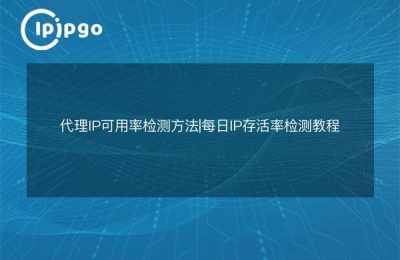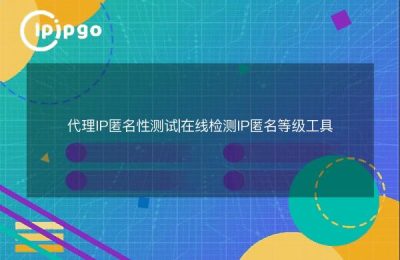
Why do I need a proxy IP for server backup?
Many enterprises have encountered such an embarrassment: when the main server is down, the backup server IP is restricted from accessing the target website, resulting in a direct paralysis of the business. This is the fatal injury of traditional backup program ignoring IP stability. Establishing multi-location backup nodes through proxy IP not only solves the problem of single point of failure, but also avoids the business interruption caused by the restriction of fixed IP.
Three elements of proxy IP selection
Choosing the right proxy IP is critical to the success of your backup solution:
1. Geographical coverage: Backup nodes should be distributed in at least 3 different countries/regions, e.g., one node in Asia, one in Europe, and one in the Americas. ipipgo covers residential IP resources in 240+ countries/regions around the globe, which is especially suitable for backup scenarios that require a true geographic distribution.
2. Protocol adaptability: http(s)/socks5 protocol to be fully supported, ipipgo's unique protocol adaptive technology, can automatically match the target server's optimal connection method.
3. IP purity: It is recommended to use residential IPs, which have a lower probability of being identified as real user behavior. ipipgo's pool of 90 million+ home residential IPs, each with an individual usage record, is particularly suitable for backup tasks that require long-term stable connectivity.
Four Steps to Build a Disaster Tolerant Backup System
Step 1: Architecture Design
It is recommended to use "1 master and 3 standby" architecture, the main server is responsible for daily business, three standby nodes through the proxy IP to keep data synchronization. When the main node is abnormal, the system automatically switches to the standby node with the lowest latency.
Step 2: Proxy Configuration in Action
Install a proxy client on the standby server and get an exclusive IP through the ipipgo API. use the Nginx reverse proxy as an example:
proxy_pass http://[ipipgo-provided IP]:port;
Test the connection with curl after the configuration is complete:
curl --proxy socks5://[ipipgo account]:[password]@[IP]:[port] http://你的业务域名
Step 3: Synchronization Policy Settings
A combination strategy of incremental synchronization + timed full backups is recommended. Utilize rsync to establish an encrypted channel through a proxy IP:
rsync -avz -e 'ssh -p [port] -o ProxyCommand="openssl s_client -connect [ipipgoIP]:[port] -quiet"' /source directory user@targetserver:/target directory
Step 4: Failover test
Use the tc command to simulate network latency and packet loss to verify the speed of the standby node takeover. It is recommended that a monthly disconnection drill be conducted to record the response time of each node and form a baseline for switching performance.
Essential Tips for Operations and Maintenance Staff
- Set up IP reputation monitoring to automatically replace a proxy IP with a new one via the ipipgo API when the request failure rate of that proxy IP exceeds 5%.
- Add IP fingerprinting to backup logs for easy problem tracing:
logger -t ipipgo_backup "[task id]_[ip address]_[geolocation]"
- Dynamically adjust proxy policies for different business scenarios using IP type labels (home broadband/enterprise leased line) provided by ipipgo
Frequently Asked Questions QA
Q: Will frequent dynamic IP changes affect backup integrity?
A: ipipgo's session hold technology can maintain long TCP connections and automatically migrate unfinished tasks during IP switching, with a measured packet loss rate of <0.03%.
Q: How to verify the real geographic location of the proxy IP?
A: Use the IP locator interface provided by ipipgo to perform verification before the backup begins:
curl https://api.ipipgo.com/geo-check?ip=[proxy IP]
Q: What should I do if the latency of cross-country backup is too high?
A: It is recommended to use ipipgo's Anycast acceleration technology to select nodes with delay <150ms through intelligent routing. Measured cross-country transmission speed can be increased by 3-5 times
Real Scenario Examples
A cross-border e-commerce platform has adopted the program:
- Data synchronization time reduced from 8 hours to 47 minutes
- Server switchover time reduced from 15 minutes to 28 seconds
- Backup failure rate due to IP restriction reduced from 12% to 0
Feedback from its technical director: "With ipipgo's global residential IP resources, we have achieved true distributed hot standby with a business continuity metric of 99.99%"








